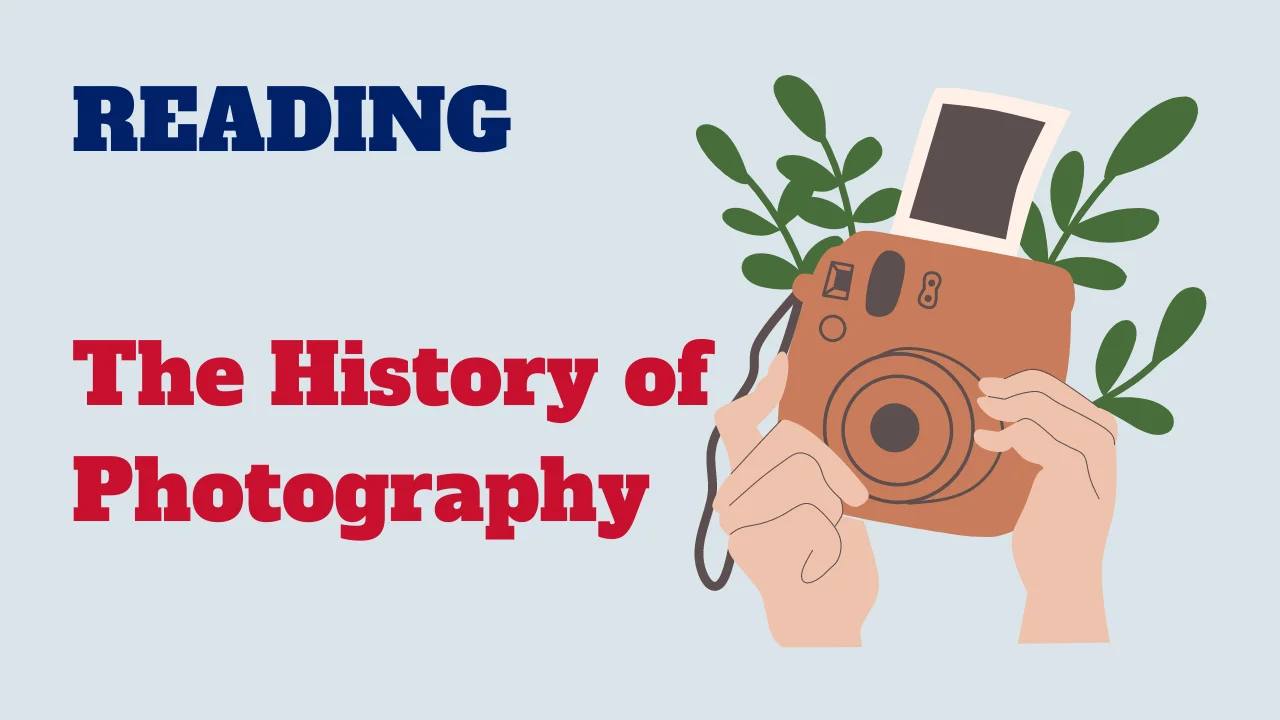Welcome to an enlightening journey through the history of photography! In this reading activity, we’ll explore the fascinating evolution of photography from its humble beginnings to the digital age. Discover the pioneering discoveries, inventions, and innovations that have shaped this art form over the centuries.

Let’s delve into the captivating story of how humanity learned to capture and preserve moments in time.
Text: The History of Photography
The history of photography is a captivating journey through technological advancements, artistic innovation, and societal evolution. It begins long before the invention of the camera, with the ancient Greeks and Chinese understanding the basic principles of light and optics. However, it wasn’t until the early 19th century that the first permanent photographic image was produced.
In 1826, Joseph Nicéphore Niépce captured the world’s first photograph, “View from the Window at Le Gras,” using a camera obscura and a bitumen-coated pewter plate. This groundbreaking achievement laid the foundation for the development of photography as we know it today.
The medium rapidly evolved throughout the 19th century, with pioneers like Louis Daguerre and William Henry Fox Talbot refining techniques and inventing new processes. Daguerre’s introduction of the daguerreotype in 1839 revolutionized photography, offering a practical and commercially viable method for creating images. Meanwhile, Talbot’s invention of the calotype process allowed for the production of multiple prints from a single negative, democratizing access to photography.
The latter half of the 19th century saw photography’s expansion into various fields, including journalism, science, and art. The invention of the dry plate process by Richard Leach Maddox in 1871 made photography more accessible and portable, leading to the widespread use of cameras by amateurs and professionals alike.
The 20th century witnessed further innovations, such as the introduction of roll film by George Eastman, which made photography even more convenient and popular. The development of color photography, pioneered by figures like James Clerk Maxwell and the Lumière brothers, opened up new creative possibilities and expanded the medium’s appeal.
In the digital age, photography underwent a paradigm shift with the advent of digital cameras and image editing software. This transformation democratized photography even further, allowing anyone with a smartphone to capture, edit, and share images instantaneously.
Today, photography continues to evolve alongside advances in technology and changes in society. From documentary photography to conceptual art, the medium remains a powerful tool for expression, exploration, and documentation, preserving moments in time and shaping our collective visual culture.
Comprehension questions
Congratulations on completing this exploration of the history of photography! By learning about the key milestones and innovations in photography, we gain a deeper appreciation for this art form’s evolution. From its humble beginnings to the digital age, photography continues to captivate and inspire people worldwide. Let’s embrace the rich legacy of photography and continue to explore its limitless possibilities.



